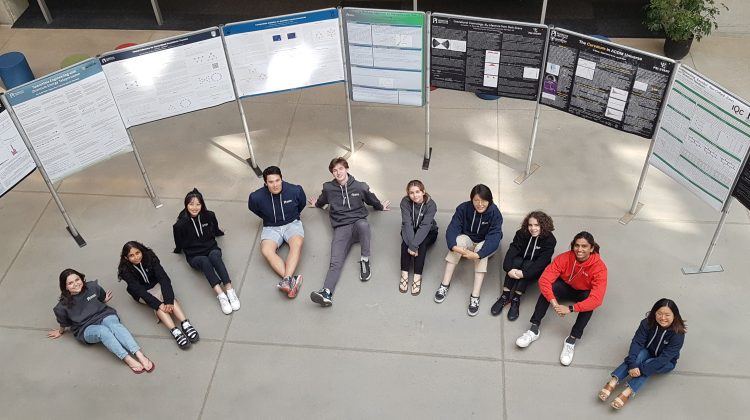Bioinformatics by way of physics
Perimeter Scholars International’s first valedictorian, Imogen Wright, still draws on methods she learned at Perimeter in her genetic testing work for HIV treatment.
When Imogen Wright stepped to the microphone to give the first valedictory speech of a nascent Perimeter Scholars International (PSI) program in 2010, she was mostly speaking to an incredibly tight-knit group of her peers.
The program’s first 28 graduates, who had come to Waterloo from 17 countries spanning six continents, had toiled together at all hours of day and night, earning enough credits for the equivalent of 3.5 master’s degrees in just 10 months. In Wright’s own loving words, that first PSI class was a “crazy cabal” that showed her the unifying power of studying physics.
“I gave this rousing valedictory address about the great importance of theoretical physics – and then definitely went and did something else immediately,” she says.
Most of her classmates went on to PhDs at world-class institutions. Wright went into software development. Six years later, she has co-founded a bioinformatics start-up tackling HIV and other serious diseases. It was by no means a direct route.
Following PSI, Wright began working as a software developer, first with Amazon.com and then for Skimlinks, a small start-up in the UK. Life was good, but she found herself searching for a deeper sense of satisfaction. She also wanted to return to her native South Africa.
While in London, Wright began poking around the Internet in much the same fashion that had led her to discover PSI back in 2009.
In her online wanderings, she found a research group at the University of the Western Cape doing computational work tied to HIV. Despite having no biology background, she emailed the group leader, Simon Travers, and asked for a job. She figured her math, statistics, and computer science skills might be of use. He agreed.
From 2012 to 2014, Wright completed a PhD at the South African National Bioinformatics Institute at the University of the Western Cape and, with Travers and two other colleagues, co-founded Hyrax Biosciences, a social entrepreneurship venture that develops cost-effective ways to do complex genetic testing.
“The World Health Organization recommends that every single person who is HIV-positive should be on antiretroviral drugs, and that every single one of those persons should get a drug resistance test before they go on any drugs,” explains Wright.
There are parts of the world where that generally happens. Sub-Saharan Africa is not one of them.
“They probably do a few thousand of these tests a year and we have 25 million HIV-positive people,” says Wright. “There’s a massive gap that we’ve got to fill, and we’re trying very hard to provide the things that can help fill that gap.”
At Hyrax, they’re essentially doing statistical analysis on really noisy data – Wright describes it as “the cosmic microwave background of biology” – and cutting the costs associated with the drug-resistance testing in question by at least a factor of 10.
The South African Department of Health has expressed interest in their work, and they’re now trying to get it into the hands of other governments, as well as public and private labs. They’re also hoping to launch similar products addressing tuberculosis and hospital-acquired infections in the next year or two.
It may seem like Wright is a long way from physics, but she credits PSI with enhancing key skills that she still uses today.
“I draw massively on the method of abstract thinking that doing a lot of theoretical physics teaches you,” she says. “If the average computer scientist can go to three or four levels of abstraction from whatever the underlying data is that they’re looking at, by the end of PSI, I could go to seven or eight.
“It’s still really up there on the list of the most extraordinary things I’ve ever done,” she adds.
If the beginning of Wright’s young career is any indication, that’s soon going to be a very crowded list.























































































